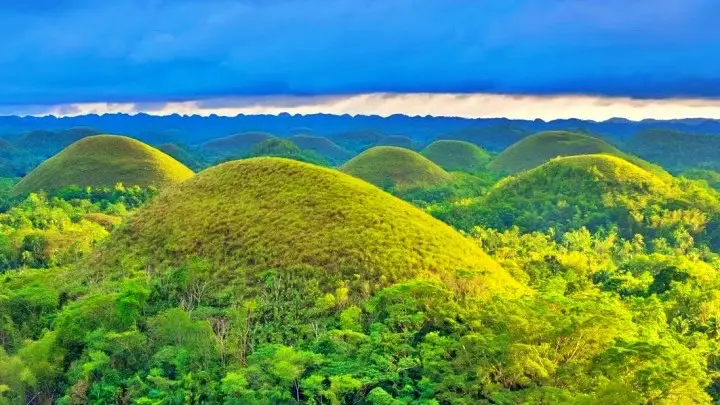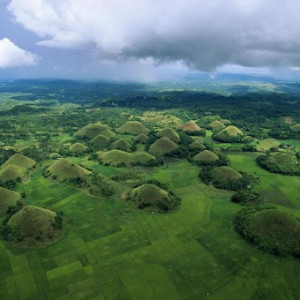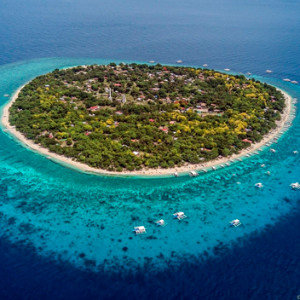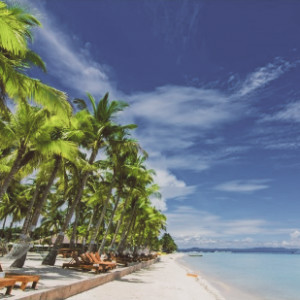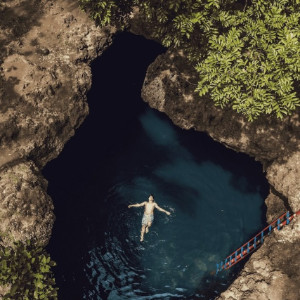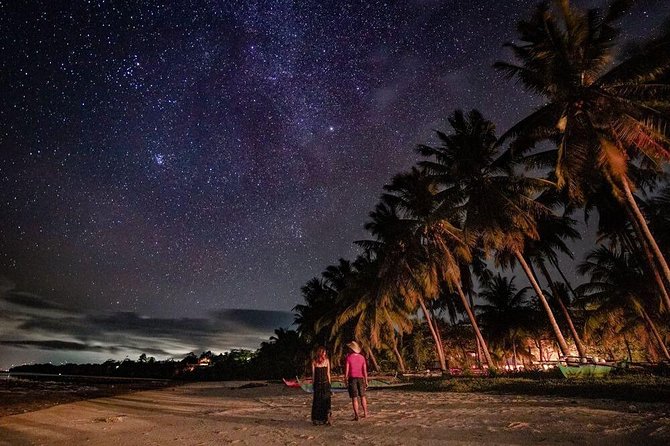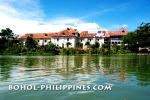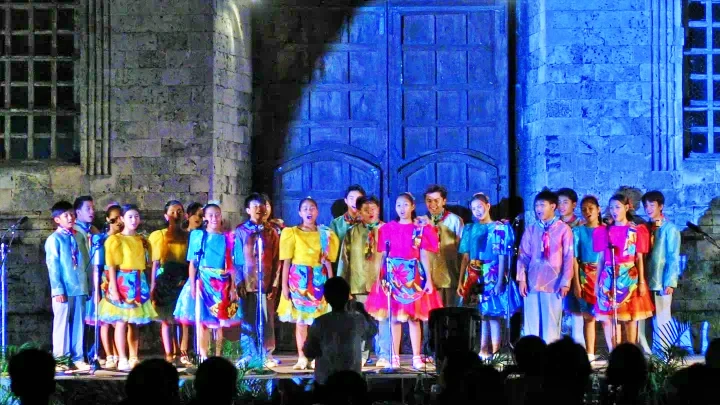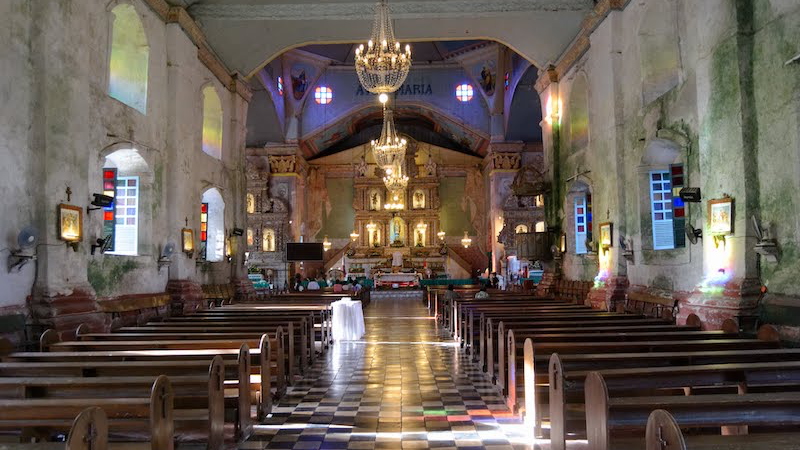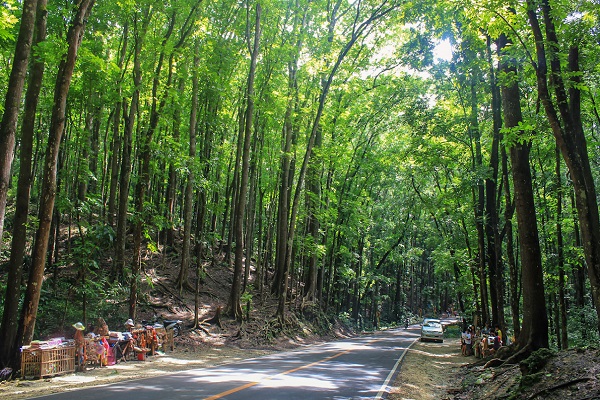- Bohol
- Bohol Attractions
- Heritage Sites
- Historical Sites
Bohol historical sites: exploring the rich heritage & storied past
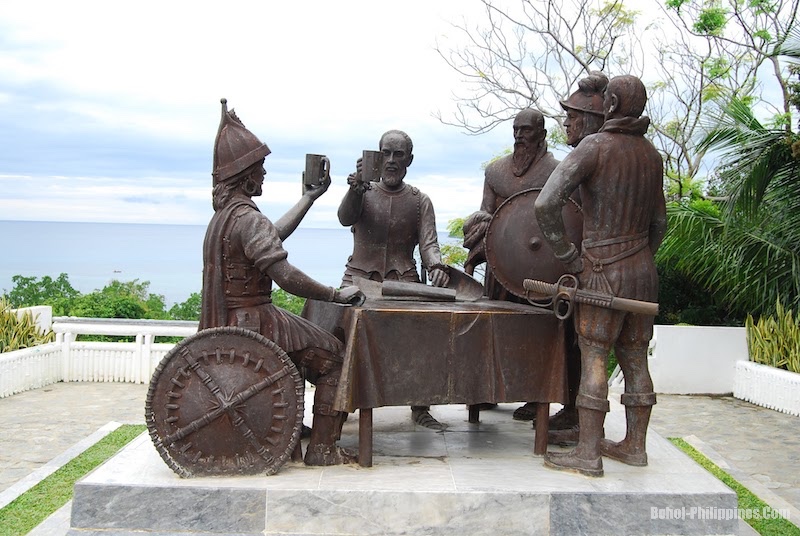
Secure your Cebu Bohol ferry tickets today to start your unforgettable journey!
Welcome to Bohol, a province in the Philippines rich in history and cultural heritage. As you explore this captivating destination, you will be immersed in the fascinating world of Bohol historical sites, uncovering the captivating tales of the past and experiencing the unique blend of history, culture, and natural beauty.
The history of Bohol stretches back centuries, and its heritage is proudly preserved in the numerous historical landmarks that dot the landscape. From ancient churches to ancestral houses, each site tells a story of the people who have shaped the island's history. Delve into the History of Bohol as you visit these sites and gain a deeper understanding of the island's past.
Bohol's heritage is a testament to its vibrant culture, which is deeply rooted in its history. The province is known for its distinct traditions, arts, and crafts that have been passed down through generations. Immerse yourself in Bohol's rich cultural tapestry and witness firsthand the traditions and customs that make it truly unique.
Bohol historical attractions offer a glimpse into the significant events that have shaped the province. From the blood compact site, where a historic pact was made between Spanish explorer Miguel López de Legazpi and Bohol chieftain Sikatuna, to the Bohol historical Sites associated with the revolt against Spanish colonial rule led by Francisco Dagohoy, the events of the past come alive as you explore these landmarks.
A historical tour of Bohol takes you on a journey through time, allowing you to discover the hidden gems and stories that make the province special. Follow in the footsteps of famous historical figures in Bohol and learn about their contributions to the province's development. From national heroes to local icons, their legacies continue to inspire and shape the identity of Bohol.

As you explore Bohol Historical Sites, you will be captivated by the architectural marvels and the intricate details that reflect the province's rich history. Marvel at the centuries-old churches, such as the iconic Baclayon Church and the charming Loboc Church, and discover the stories behind their construction and significance.
Bohol's historical sites are not just relics of the past; they are living testaments to the province's vibrant history and culture. Embark on a journey of discovery, and let the stories of Bohol's past unfold before your eyes. Experience the charm, beauty, and heritage that have shaped this remarkable province, and create memories that will last a lifetime.
Recommended Bohol Philippines Tours
[ Bohol Sight Seeing Day Trips - Check Out Availability ]
[ Full Day Cruise and Sailing Tours - Check out Availability ]
[ Full Day Adventure Tours - Check out Availability ]
Discover more of Bohol's natural wonders through our recommended tours. Click on the links below to embark on unforgettable adventures:
Ready to explore the beautiful islands of Cebu and Bohol? Secure your ferry tickets today through 12go and start your unforgettable journey!
History of Bohol
The history of Bohol is a captivating tale of early settlements, colonization, resistance, and periods of occupation. This island province in the Philippines has witnessed the rise and fall of various civilizations, leaving behind a rich historical legacy that shapes its identity today.
Bohol's history can be traced back to the precolonial era when it was inhabited by indigenous cultures. These early settlers, known as the Boholanos, lived off the land and sea, developing their unique traditions, customs, and languages. Archaeological evidence suggests that the island was a thriving hub of trade and cultural exchange.
In the 16th century, Spanish colonizers arrived in Bohol, bringing with them a new era of influence and transformation. The Spanish influence can still be seen today in the preserved colonial-era churches and structures that dot the province. The establishment of Spanish missions and the spread of Christianity profoundly impacted the religious and cultural landscape of Bohol.

However, not all Boholanos embraced Spanish rule peacefully. In the 18th century, Francisco Dagohoy led a revolt against the Spanish authorities that would become one of the longest recorded revolts in Philippine history. Known as the Dagohoy Rebellion, it lasted for over 80 years and served as a symbol of Boholano resistance against colonial oppression.
The 20th century brought new chapters to Bohol's history with the arrival of American and Japanese forces. During the American occupation, Bohol played a significant role in the Philippine Revolution and the Philippine-American War. It became a stronghold for Filipino freedom fighters who fought for independence.
The Japanese occupation during World War II also left its mark on Bohol, with stories of bravery and resilience emerging from the local population. The scars of war can still be seen in some historical landmarks and the memories of those who lived through that tumultuous period.
Today, the history of Bohol is celebrated and preserved through various initiatives. Museums, heritage sites, and cultural events pay homage to the island's rich past and its people's enduring spirit. Exploring Bohol's historical sites allows visitors to delve into its captivating history and gain a deeper appreciation for its cultural heritage.
As you embark on a journey through Bohol, take the time to discover the remnants of early settlements, marvel at the architectural wonders of the Spanish era, reflect on the courage of resistance fighters, and remember the sacrifices made during times of occupation. Bohol's history is a tapestry of diverse experiences and stories that continue to shape its present and inspire its future.

Bohol Historical Sites & Heritage
Bohol, with its vibrant heritage, is a treasure trove of distinct traditions, arts, and crafts that have been passed down through generations. This province in the Philippines is known for its rich cultural practices and customs, which continue to thrive and shape the identity of the Boholano people.
The cultural heritage of Bohol encompasses a wide array of artistic expressions, from traditional music and dance to visual arts and crafts. The province is renowned for its vibrant festivals, where locals showcase their talents and celebrate their cultural roots. Festivals like the Sandugo Festival, showcasing the historical Blood Compact event, and the Ubi Festival, honoring the province's purple yam, are just some of the highlights that capture the essence of Bohol's heritage.
Music and dance play an integral role in Boholano culture. Traditional music is characterized by rhythmic beats and melodious tunes, often accompanied by indigenous musical instruments such as the kulintang, kudyapi, and agung. These instruments produce captivating sounds that reflect the deep-rooted connection of the Boholanos with their natural surroundings.
Dance forms like the Kuradang, Tinikling, and Polka Sa Nayon showcase the grace, agility, and storytelling elements deeply embedded in Boholano culture. These dances are often performed during festive occasions, adding an enchanting and lively atmosphere to celebrations.
The visual arts in Bohol are equally impressive, with skilled craftsmen creating intricate pieces using various materials such as bamboo, coconut shells, and rattan. Basketry, mat weaving, and pottery are some of the traditional crafts that showcase the ingenuity and creativity of the Boholano artisans.
Cultural practices and customs are also deeply rooted in the daily lives of the Boholano people. From traditional courtship rituals to religious observances and traditional healing practices, these customs reflect the values and beliefs that have been cherished by generations.
As you explore Bohol's heritage, you will encounter the warmth and hospitality of its people, who take pride in preserving their cultural heritage. Museums, cultural centers, and community-based organizations actively work towards safeguarding and promoting the traditions and arts of Bohol.
Immerse yourself in the vibrant cultural tapestry of Bohol, engage with the local communities, and witness firsthand the living heritage that has been preserved over the centuries. By appreciating and supporting the Boholano heritage, you contribute to the continuation of this rich legacy and help ensure its preservation for future generations to come.

Bohol Historical Sites & Landmarks
Bohol is home to several historical landmarks that serve as testament to its rich history and cultural heritage. These landmarks are not only architectural marvels but also hold significant historical and cultural value. Exploring Bohol Historical Sites offers a glimpse into the past and an opportunity to appreciate the legacy of Bohol.
The Blood Compact Site in Tagbilaran City commemorates the historic event known as the Sandugo, or Blood Compact, which took place in 1565. It symbolizes the friendship and camaraderie between Spanish explorer Miguel Lopez de Legazpi and Bohol's chieftain, Datu Sikatuna. The site features a monument depicting the blood compact ceremony.
2. Baclayon Church:
The Baclayon Church, also known as the Church of Our Lady of the Immaculate Conception, is one of the oldest stone churches in the Philippines. Built in the 18th century, it showcases Spanish colonial architecture with its coral stone façade and intricately carved wooden altars. The church also houses a museum that displays religious artifacts and artifacts related to Bohol's history.
3. Loboc Church:
The Loboc Church, or the Church of San Pedro, is another significant religious landmark in Bohol. Built in the 17th century, it is one of the oldest churches in the province. The church boasts a mix of architectural styles, including Gothic, Moorish, and Baroque influences. It is also known for its stunning ceiling murals and antique religious icons.
4. Panglao Watchtower:
The Panglao Watchtower, located in the municipality of Panglao, served as a lookout point during the Spanish colonial period to protect against pirate attacks. It is a well-preserved stone tower that offers panoramic views of the surrounding area. The watchtower stands as a reminder of Bohol's maritime history and the need to safeguard its shores.
5. Dauis Church:
The Dauis Church, or the Church of Our Lady of the Assumption, is a beautiful church known for its unique location near the sea. Its façade is made of coral stones and features a blend of Gothic and Romanesque architectural styles. The church is also famous for its miraculous well, which is believed to have healing powers.
6. Bohol Provincial Capitol:
The Bohol Provincial Capitol, located in Tagbilaran City, is an impressive structure that serves as the seat of government for the province. Built in the early 20th century, it showcases neoclassical architectural design and features a central dome and colonnades. The capitol building is not only a symbol of governance but also a significant historical landmark in Bohol.
Visiting these historical landmarks in Bohol allows you to appreciate the architectural grandeur, learn about the province's history, and connect with its cultural roots. These Bohol Historical Sites provide a glimpse into Bohol's past and serve as a reminder of the enduring legacy of the province.
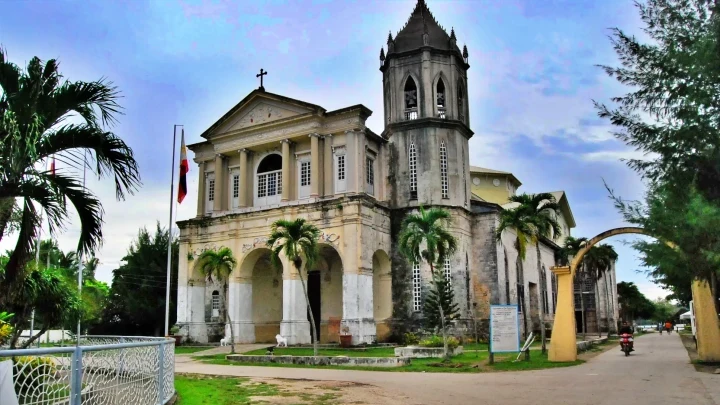
Bohol Historical Sites & Events
Bohol has witnessed several significant historical events that have shaped its identity and contributed to the history of the Philippines. These events highlight the courage, resilience, and determination of the Boholanos in their pursuit of freedom and independence.
Blood Compact:
One of the most iconic historical events in Bohol is the Blood Compact, which took place in 1565. It marked the first recorded treaty of friendship and alliance between Spanish explorer Miguel López de Legazpi and Bohol's chieftain, Datu Sikatuna. The Blood Compact symbolizes the spirit of camaraderie and mutual respect between different cultures.
Francisco Dagohoy's Revolt:
Another significant event in Bohol's history is the revolt led by Francisco Dagohoy. From 1744 to 1829, Dagohoy led the longest recorded revolt against Spanish colonial rule in the Philippines. His resistance, fueled by his desire for justice and independence, lasted for more than 80 years. Dagohoy's revolt became a symbol of Boholano bravery and determination in the face of oppression.
Bohol's Role in the Philippine Revolution and the Philippine-American War:
Bohol played an active role in the struggle for independence during the Philippine Revolution against Spanish rule and the subsequent Philippine-American War. Boholano revolutionaries fought alongside other Filipino freedom fighters in various battles, including the Siege of Catigbian and the Battle of Ubujan. These events signify the Boholanos' commitment to the cause of national liberation and their resolve to defend their homeland.
These historical events are testaments to the resilience and courage of the Boholanos throughout history. They serve as a reminder of the struggles faced and sacrifices made by the people of Bohol in their pursuit of freedom, independence, and the preservation of their cultural heritage. Visiting the Bohol Historical Sites associated with these events allows visitors to connect with the past and gain a deeper understanding of the historical significance of Bohol in the Philippines.

Bohol History and Culture
Bohol's rich history has profoundly influenced its vibrant culture, creating a unique blend of traditions, customs, and artistic expressions that showcase the island's identity. The historical events that unfolded in Bohol have left a lasting impact on its culture, shaping the beliefs, practices, and values of its people.
The Spanish colonization period significantly influenced Bohol's culture, as it introduced Catholicism and established Spanish-influenced structures, such as churches and ancestral houses that still stand today. The fusion of Spanish and indigenous influences can be seen in Bohol's religious practices, religious festivals, and architecture.
Bohol takes pride in its numerous festivals and celebrations that highlight its history, heritage, and cultural diversity. One of the most notable festivals is the Sandugo Festival, which commemorates the Blood Compact between Miguel López de Legazpi and Sikatuna. This grand celebration features street dancing, parades, cultural performances, and reenactments, allowing locals and visitors to immerse themselves in the historical significance of the event.
Other festivals in Bohol, such as the Ubi Festival and the Kawayan Festival, showcase the island's agricultural traditions and the craftsmanship of its people. These festivals provide an opportunity to experience the local cuisine, traditional dances, music, and the artistry of Boholano handicrafts.
Bohol's culture is also deeply rooted in its traditional practices and customs that have been passed down through generations. The use of the native language, Visayan, remains prevalent, and the island's cuisine, with its unique flavors and ingredients, reflects its cultural heritage. Traditional weaving, basket-making, and other crafts continue to thrive, preserving the artistic skills and craftsmanship of the Boholanos.
Visitors to Bohol can explore museums, Bohol Historical sites, and ancestral houses that offer insights into the island's history and cultural heritage. These include the Bohol National Museum, Baclayon Church and Museum, and the Loboc Museum, among others.
Bohol's history and culture are intertwined, and they play a vital role in shaping the island's identity. By immersing oneself in the local traditions, participating in festivals, and exploring historical landmarks, visitors can gain a deeper appreciation for the rich history and vibrant culture of Bohol.
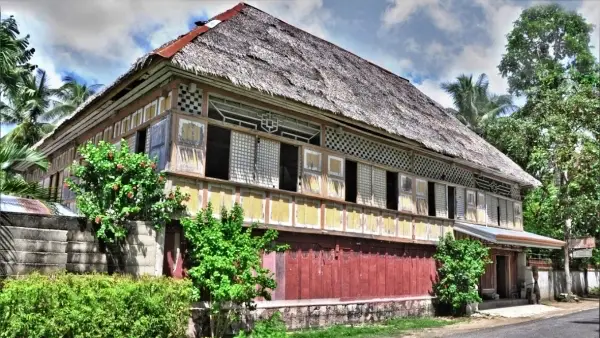
Bohol Historical Sites & Attractions
Bohol is home to a myriad of historical attractions that offer a glimpse into its captivating past. These attractions showcase the architectural beauty, cultural significance, and historical importance of the island. From heritage houses and ancestral homes to museums and cultural centers, as well as historic plazas and parks, there are plenty of places to explore and immerse yourself in Bohol's rich history.
Heritage Houses and Ancestral Homes:
Bohol boasts a collection of well-preserved heritage houses and ancestral homes that reflect the island's colonial past. These architectural gems showcase a blend of Spanish and Filipino influences, featuring intricate wooden carvings, elegant design elements, and spacious living quarters. Visiting these houses offers a glimpse into the lives of prominent families and provides insight into Bohol's social and cultural history.
Museums and Cultural Centers:
The island is home to several museums and cultural centers that preserve and showcase Bohol's historical artifacts, artworks, and cultural heritage. The Bohol National Museum in Tagbilaran City houses a wide range of exhibits, including archaeological finds, ethnographic displays, and religious artifacts. The Loboc Museum, located within the Loboc Church complex, provides a comprehensive look at the history and culture of the region. Other notable museums and cultural centers include the Baclayon Museum and the Carlos P. Garcia Heritage House.
Historic Plazas and Parks:
Bohol's historic plazas and parks are not only scenic but also hold significant historical value. The Plaza Rizal in Tagbilaran City, named after the national hero Jose Rizal, is a popular gathering place and a symbol of Bohol's patriotism. The Plaza Independencia in the town of Jagna is another notable plaza that played a significant role in the island's history. These plazas offer a peaceful setting to relax, soak in the atmosphere, and appreciate the historical significance they hold.
Exploring these historical attractions in Bohol provides a deeper understanding of the island's rich heritage and allows visitors to connect with its storied past. Whether you are interested in architecture, art, or simply want to delve into the local history, Bohol's historical attractions offer a fascinating journey through time and culture.
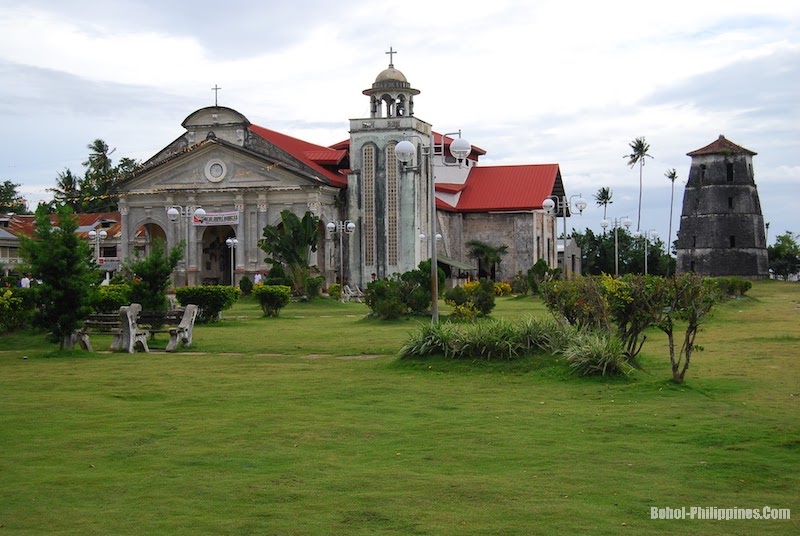
Bohol Historical Sites to Visit
Bohol is a treasure trove of historical places that beckon visitors to delve into its captivating past. Here are some suggestions for exploring the Bohol Historical Sites and recommendations for tour routes and transportation options.
Start your historical journey in Baclayon, where the centuries-old Baclayon Church stands as one of the oldest stone churches in the Philippines. Marvel at its Baroque architecture and explore the adjacent museum, which houses religious artifacts and artifacts from Bohol's history.
From Baclayon, make your way to Loboc and visit the Loboc Church, another iconic heritage site that dates back to the Spanish colonial era. Admire its massive stone walls, intricate carvings, and historic bell tower.
Head to the town of Tagbilaran and visit the Blood Compact Site, a significant historical landmark commemorating the blood compact or sandugo between Spanish explorer Miguel López de Legazpi and Datu Sikatuna, a local chieftain. Learn about this important event in Philippine history and enjoy the panoramic views of the Bohol Sea.
Take a trip to Panglao Island and explore the Panglao Watchtower, an ancient stone tower built during the Spanish colonial period. The watchtower offers a glimpse into the island's history and provides stunning views of the surrounding landscape.
While not strictly a historical site, the Chocolate Hills are a must-visit attraction in Bohol. These unique geological formations are considered one of the natural wonders of the Philippines and have become an iconic symbol of the province.

Recommended Tour Routes and Transportation Options:
If you prefer a self-guided exploration, you can rent a motorbike or hire a tricycle to visit the Bohol Historical Sites at your own pace. This allows you the flexibility to spend more time at each location and customize your itinerary.
Joining a guided tour is a convenient option as it provides knowledgeable guides who can share insights and stories about the historical places you visit. Many tour operators offer half-day or full-day tours that cover multiple sites, ensuring a comprehensive historical experience.
Public buses and vans are available for transportation between towns in Bohol. You can easily hop on a public vehicle to reach the different Bohol Historical Sites. However, be mindful of the schedules and plan your itinerary accordingly.
Hiring a private vehicle, such as a car or van, allows you to have more control over your itinerary and provides greater comfort and convenience, especially if you're traveling with a group or with family.
Remember to check the opening hours of each site and plan your visit accordingly. Respect any cultural or historical significance associated with the places you visit and follow any guidelines provided by the authorities.
Exploring the historical places in Bohol is a fascinating journey that allows you to immerse yourself in the rich heritage and storied past of the island. Whether you choose to go on a DIY adventure or join a guided tour, these Bohol Historical Sites offer a glimpse into the captivating history of Bohol and provide a deeper appreciation for its cultural legacy.
Famous Historical Figures in Bohol
These individuals have left a lasting impact on Bohol's history and the Philippines as a whole, shaping the region's culture, politics, and identity. Their contributions are celebrated and remembered as part of the rich historical tapestry of Bohol.
Francisco Dagohoy: One of the most famous historical figures in Bohol, Francisco Dagohoy was a Boholano leader who led the longest recorded rebellion against Spanish colonial rule in the Philippines. His revolt, known as the Dagohoy Rebellion, lasted for over 80 years from 1744 to 1829.
Tamblot: Tamblot was a native Boholano priest and chieftain who led a religious uprising against Spanish colonization in the early 17th century. He advocated for the restoration of indigenous religious practices and opposed the spread of Christianity in the region.
Carlos P. Garcia: Born in Talibon, Bohol, Carlos P. Garcia was the eighth President of the Philippines, serving from 1957 to 1961. He was known for his "Filipino First" policy, which aimed to prioritize the interests of Filipinos in economic and cultural matters. Garcia played a significant role in shaping the country's foreign policy and advocating for national sovereignty.
Other notable individuals from Bohol's history include:
Jose Abueva: A renowned political scientist, educator, and former president of the University of the Philippines. Abueva has made significant contributions to public administration and political science in the Philippines.
Marcela Mariño Agoncillo: A native of Taal, Batangas, Marcela Agoncillo is known for sewing the first official Philippine flag, also known as the "Lone Star Flag." She married a Boholano, Lorenzo Agoncillo, and they resided in Bohol for several years.
Jose Corazon de Jesus: Also known as Huseng Batute, Jose Corazon de Jesus was a prominent Filipino poet and songwriter. He composed many well-loved poems and popular songs, contributing to the cultural and literary heritage of the Philippines.
history of bohol towns
History of Garcia Hernandez of Bohol
History of Lila Bohol Philippines
Colorful History of Danao Bohol Philippines
History of Dagohoy Town of Bohol
History of the Town of Trinidad, Bohol Philippines
Bohol History Bohol History. by Robert S. Gardner. Created by virtue of Act 2711 of March 10, 1917, this island province of Bohol is the tenth largest island in the ...
The History of the Town of Sikatuna
History of Baclayon Church-Bohol
Dauis Church of Our Lady of the Assumption
Loboc Then and Now in the annals of Philippine history
History of the Town of Getafe, Bohol
Catigbian History: From Dirt to Gold - Bohol
Talibon's Rich Historical Heritage
Eskaya: A Bit of History- Bohol-Philippines
Discover the Rich Heritage and Architectural Marvels of Bohol
Alburquerque Bohol Historical Heritage
Tubigon History - Bohol-Philippines.com
Jagna Historical and Religious Sites
The History of President Carlos P. Garcia Town
Blood Compact Bohol - Exploring the History of the Sandugo
Bohol Sandugo Festival: Celebrating History and Cultural Vibrancy
Bohol's Loboc Ancestral Houses: A Journey into Living History
Discover the Historic Blood Compact Heritage Site in Bohol
The Battle of Ubujan - History of Bohol-Philippines
Bohol Churches: Legacy of Faith Discovering the Spanish Heritage
Eskaya The history of the Eskaya tribe is largely based on “old books” whose contents have been handed down from generation to generation.
Francisco Dagohoy: A Slice of History and Myth
recap of bohol historical sites - go explore
Bohol's rich historical heritage is a testament to its vibrant past and cultural significance. From the Spanish colonial era to the struggles and triumphs of the Filipino people, the Bohol Historical Sites offer a captivating glimpse into the island's history.
Whether you're fascinated by centuries-old churches, intrigued by the stories of brave revolutionaries, or simply eager to immerse yourself in the traditions and customs passed down through generations, Bohol has something to offer.
Exploring the historical sites in Bohol is an opportunity to not only learn about the island's past but also to appreciate the beauty of its architectural wonders, immerse yourself in its cultural practices, and witness the legacy of its famous historical figures.
So, whether you're a history enthusiast, a cultural explorer, or simply someone who appreciates the richness of the past, we invite you to embark on a journey through Bohol's historical sites. Discover the stories that shaped the island, marvel at its architectural marvels, and experience the vibrant culture that thrives to this day.
As you traverse the towns and villages, you'll be transported back in time, surrounded by the echoes of history and the enduring spirit of the Boholanos. So, grab your map, plan your itinerary, and get ready to uncover the captivating history that awaits you in Bohol.
Check the Bohol Tourism website for more information.
Go to homepage from Bohol Historical Sites.
Ready to explore the beautiful islands of Cebu and Bohol? Secure your ferry tickets today through 12go and start your unforgettable journey!
recommended hotel booking
Book your stay in Bohol's breathtaking surroundings through Agoda and experience the ultimate relaxation
Top 25 Sights and Attractions in Bohol
- Chocolate Hills
- Tarsier Conservation Sanctuary
- Panglao Island
- Loboc River Cruise
- Hinagdanan Cave
- Balicasag Island
- Alona Beach
- Bilar Man-made Forest
- Blood Compact Shrine
- Baclayon Church
- Bohol Bee Farm
- Anda Beach
- Sipatan Twin Hanging Bridge Loboc
- Danao Adventure Park
- Sagbayan Peak
- Butterfly Conservation Center
- Clarin Ancestral House
- Dimiao Twin Falls
- Mag-Aso Falls
- Anda White Beach
- Lamanok Island
- Rajah Sikatuna Protected Landscape
- Dauis Church
- Can-umantad Falls
- Punta Cruz Watchtower
Top 20 Destinations of Bohol
- Tagbilaran City
- Panglao Town
- Talibon Town
- Anda Town
- Loboc Town
- Dauis Town
- Ubay Town
- Tubigon Town
- Loon Town
- Jagna Town
- Alicia Town
- Carmen Town
- Getafe
- Danao Town
- Bilar
- Alburquerque
- Sierra Bullones
- Sagbayan Town
- Baclayon Town
- Antequera
Ready to explore the beautiful islands of Cebu and Bohol? Secure your ferry tickets today through 12go and start your unforgettable journey!
All Rights Reserved ©2023. Bohol Philippines Travel Guide
Address: Talibon, Bohol, Philippines
